The Pursuit of Happiness
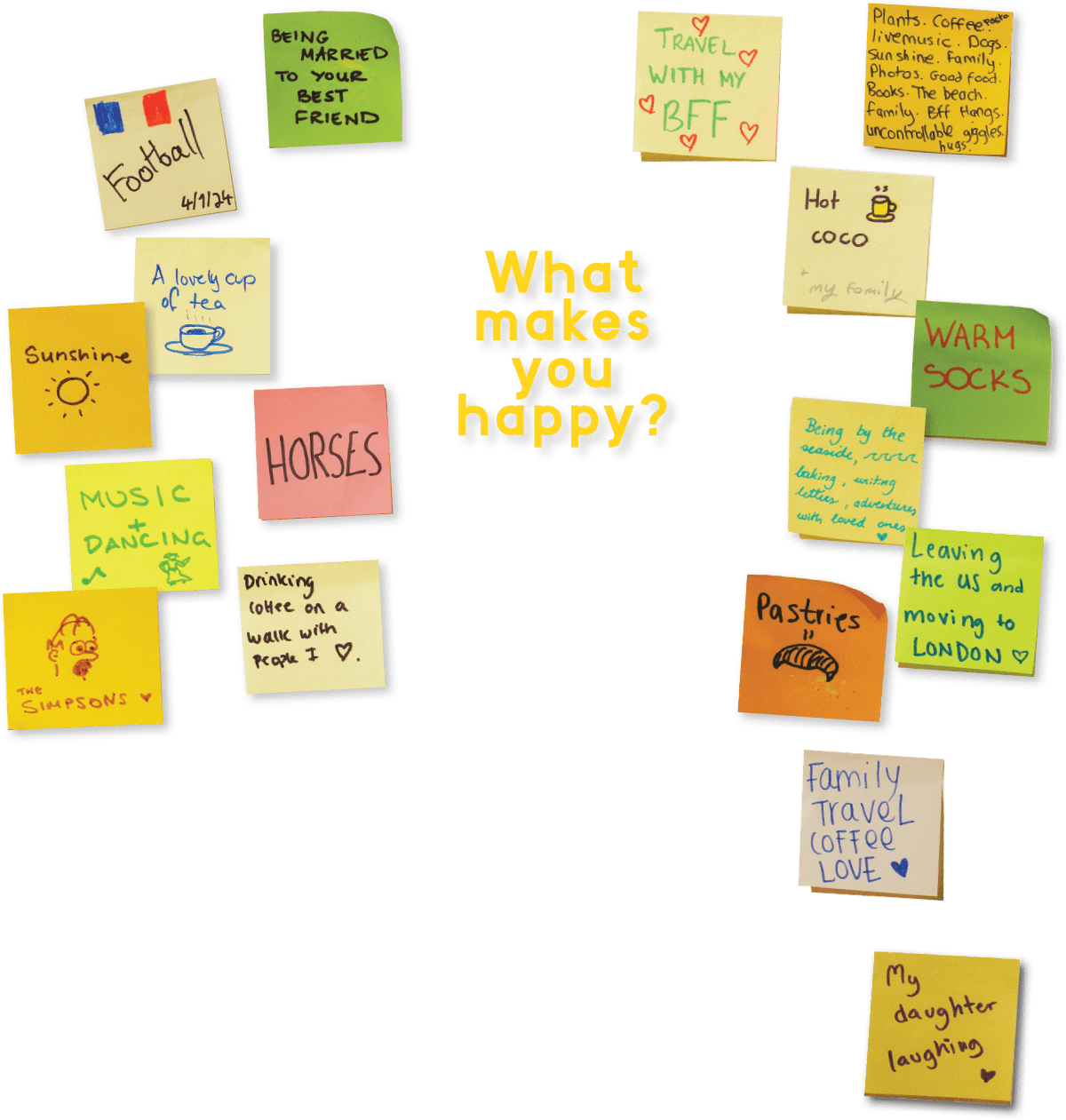
What makes you happy?
The answers run the gamut – dogs, love, travel, friends, macaroons, nature, french fries – and bring knowing nods, laughter and conversation from the 15 first-year students from the College of Charleston getting a private tour during a spring break trip in March. Most grab a pad and pen and leave behind a happy thought. Madilyne Blanton writes down her boyfriend’s name; Kelsey Carper shares some thoughts on family; and Charlotte Vyge jots “Dublin,” her mom’s hometown that she travels to often to visit relatives.
“I would define happiness as something that is fulfilling and doesn’t drain you,” says Blanton, who’s from Camp Lejeune, N.C. “For me, personally, happiness provides me with energy and motivation.”
The nine-day trip was the culmination of two months of study of Denmark’s leading rank in happiness and sustainability. Taught by psychology professors Jen Wright and Lisa Ross, the new course is part of the College’s First Year Experience program, which is designed to help students transition to college and make connections. (The Center for International Education supported 87 students studying abroad over spring break on eight trips in Europe, Central America and Africa.)
“I wanted to emphasize to this age group in particular the importance of relationships over acquiring things,” says Ross, who also wanted the students to try to foster deeper connections as opposed to social media-based ones. “So the design of this course really did start with the happiness side of things, but we also wondered what else Denmark does that’s notable to bring in students interested in sustainability.”

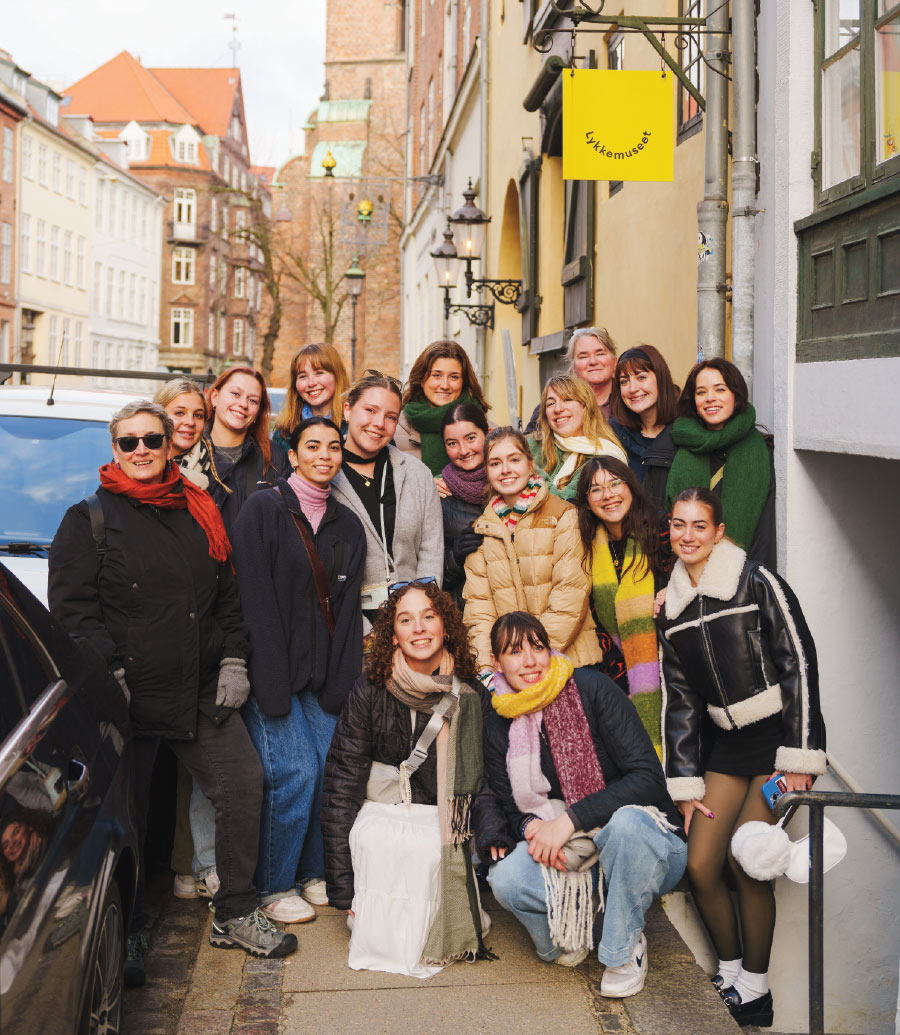
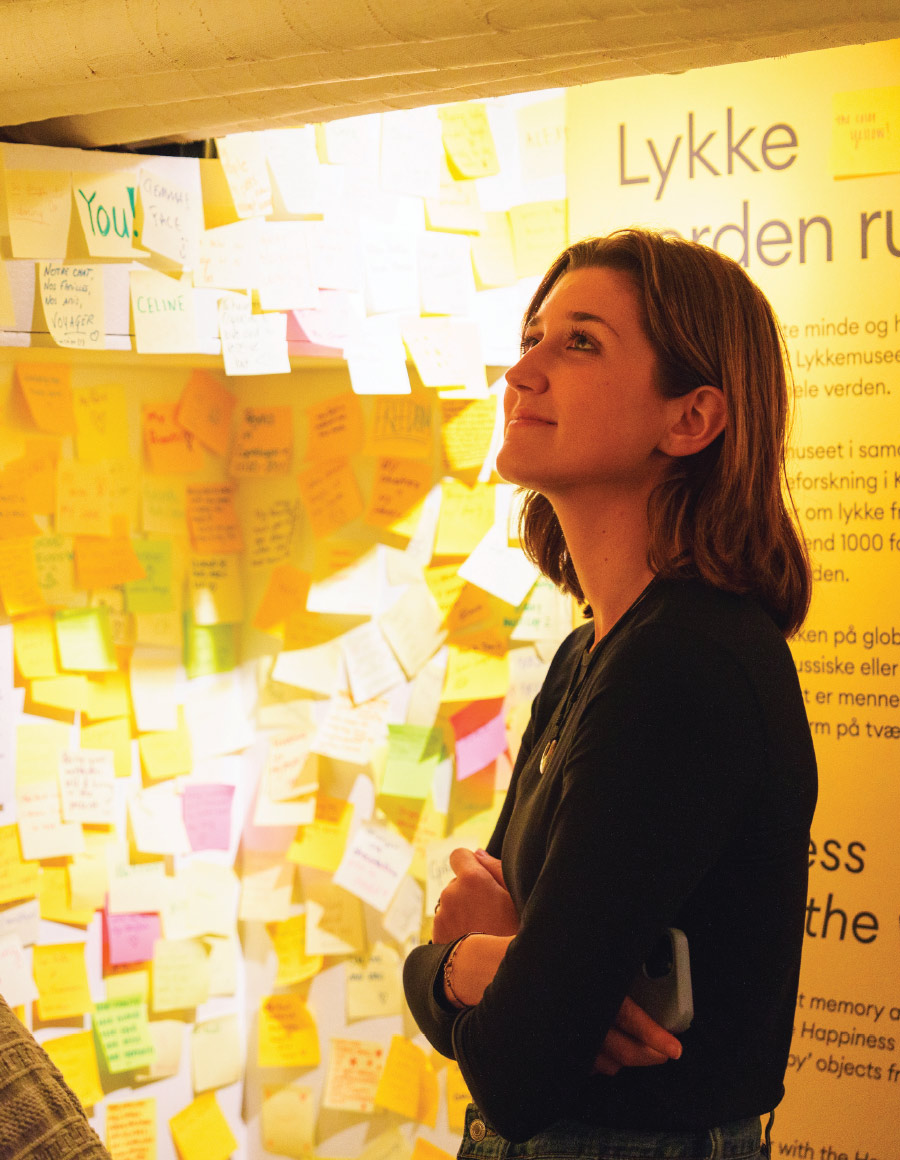
“It’s a very white-dominated space,” Lachmund points out on the World Happiness Map as the students listened attentively, no cellphones in sight.
Denmark is second behind Finland on the United Nations’ 2024 World Happiness Report’s ranking of countries. What makes the Danes so happy? In a word, hygge, Danish for well-being. The main textbook for the one-credit class is The Little Book of Hygge: The Danish Way to Living Well, by the institute’s CEO, Meik Wiking. He writes that hygge (pronounced HOO-ga) “is about an atmosphere and experience rather than about things. It is about being with the people we love. A feeling of home. A feeling we are safe, that we are shielded from the world and allow ourselves to let our guard down.”
And candles. Lots of candles. No candles, no hygge. The average Dane burns more than 13 pounds of candle wax each year – almost twice that of runner-up Austria.
Perhaps candles are just a symbol of the warmth Danes feel about each other and their country because the foundation for their happiness is the quality of life. Although they pay some of the highest tax rates in the world (46% on average), most don’t seem to mind because the welfare state “turns our collective wealth into well-being,” Wiking writes. “We are not paying taxes, we are investing in our society.”
Characterized by an extensive social security system and a high degree of income equality, the Danish welfare model helps protect against extreme unhappiness by reducing risk, uncertainty and anxiety. Everyone has free and equal access to education and health care, regardless of their social and financial background. Other tax-funded benefits include paid parental leave and subsidized daycare, a housing allowance for renters, subsidized cultural activities and sports/social clubs, and eldercare. Happiness is not a solitary pursuit but rather a shared endeavor.
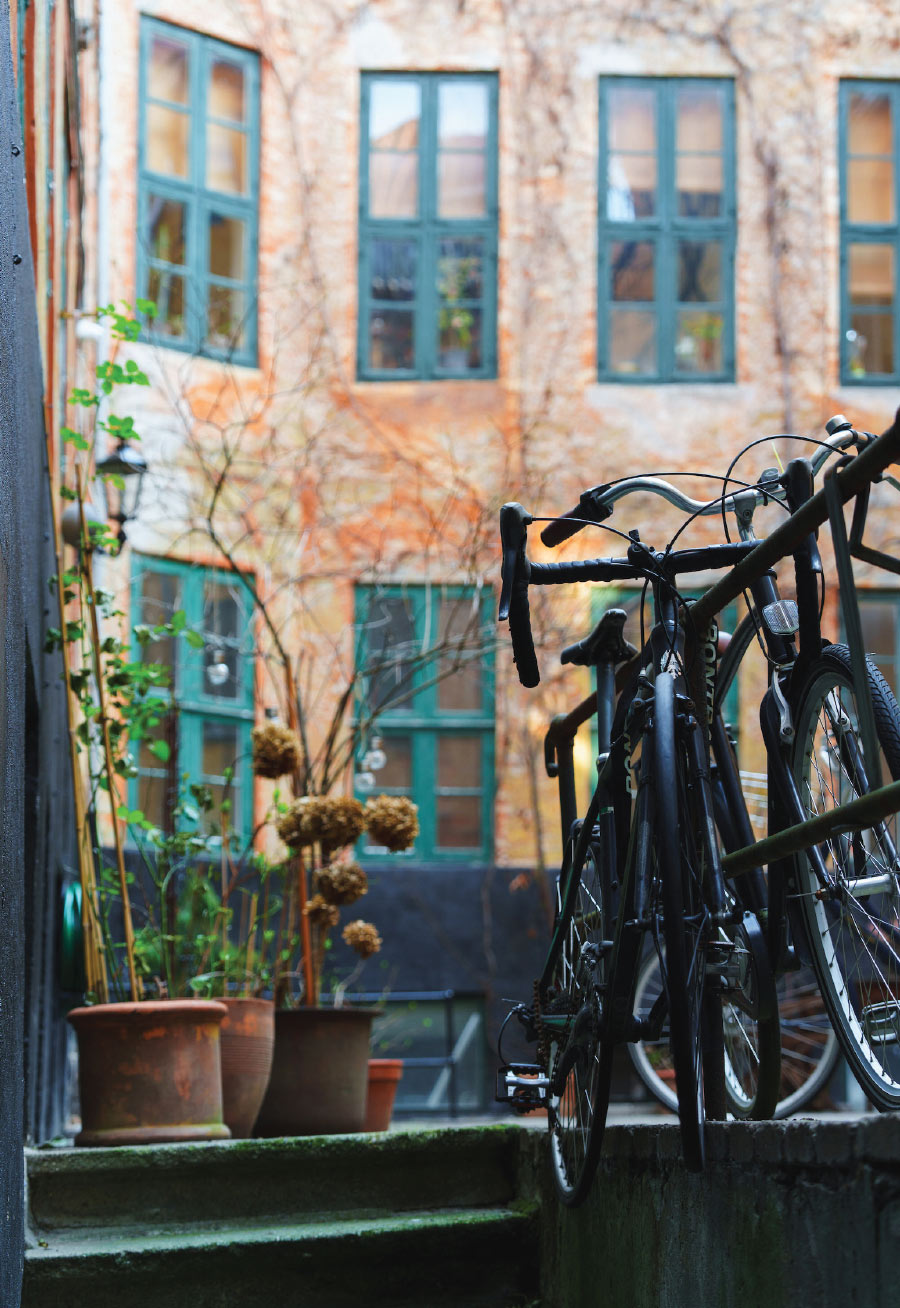
When there was a problem with Wright’s credit card following dinner one night, the server told her she could come back tomorrow and pay. “She was just like, ‘I don’t know you from Adam, but, hey, I trust you to come back and pay later,’” recalls Wright, who dashed to an ATM to get cash to pay the bill. “I was just like, ‘Wow. That would never happen in the States.’”
And Carper became a bit fraught after realizing she’d left her money belt at a restaurant, but she needn’t have worried. “I expected it to be stolen or the contents missing,” she says, “but it was still there with everything in it.”
Burn and Turn
Perhaps the most impressive of those technologies is the Amager Bakke facility, which was next on the students’ itinerary. The most modern waste-to-energy plant in the world, the facility on the outskirts of Copenhagen has an iconic look with its triangular design, giant smokestack and hundreds of rectangle windows, which are designed to blow out in the event of an explosion. Typically, the roof would be designed to blow off, but since there’s a ski slope on top, that wasn’t a good idea. The plant doubles as a recreational destination, with a tree-lined hiking and running trail and a 280-foot climbing wall (the world’s tallest), in addition to the all-season ski run.
The green slope of CopenHill, as it’s also called, hides a silo that can hold more than 24,000 tons of trash, which is mixed by two 10-ton cranes to help it burn more cleanly after being dumped off. The facility converts 534,600 tons of municipal waste a year into enough energy to electrify 95,000 homes and heat 87,000. After a presentation on the plant’s history and technology and the country’s sustainability goals, the students donned yellow vests and orange hard hats for a tour, which started at the top of the plant on a catwalk 11 stories high known as the “the Star Wars bridge.” The heat from the furnaces and sour smell from the trash were noticeable as the huge system of tubes, boilers, turbines and ovens was visible below in the 441,000-square-foot facility. Equipment to filter the smoke takes up much of the interior.
As the group made its way down, the guide explained all the inner workings – at a temperature around 1,000 degrees Celsius, two kilns have the capacity to burn 25 to 42 tons of waste per hour, 90% of which is converted to high-pressure steam. The tour ended in the unloading hall, where dump trucks and trash haulers tip their waste directly into the 118-foot silo. Looking through a window in the crane operator’s office, the students were transfixed as they watched the giant cranes mix the waste and then lift 15 tons of trash with each grab to then be dropped into the firing funnels of the ovens.
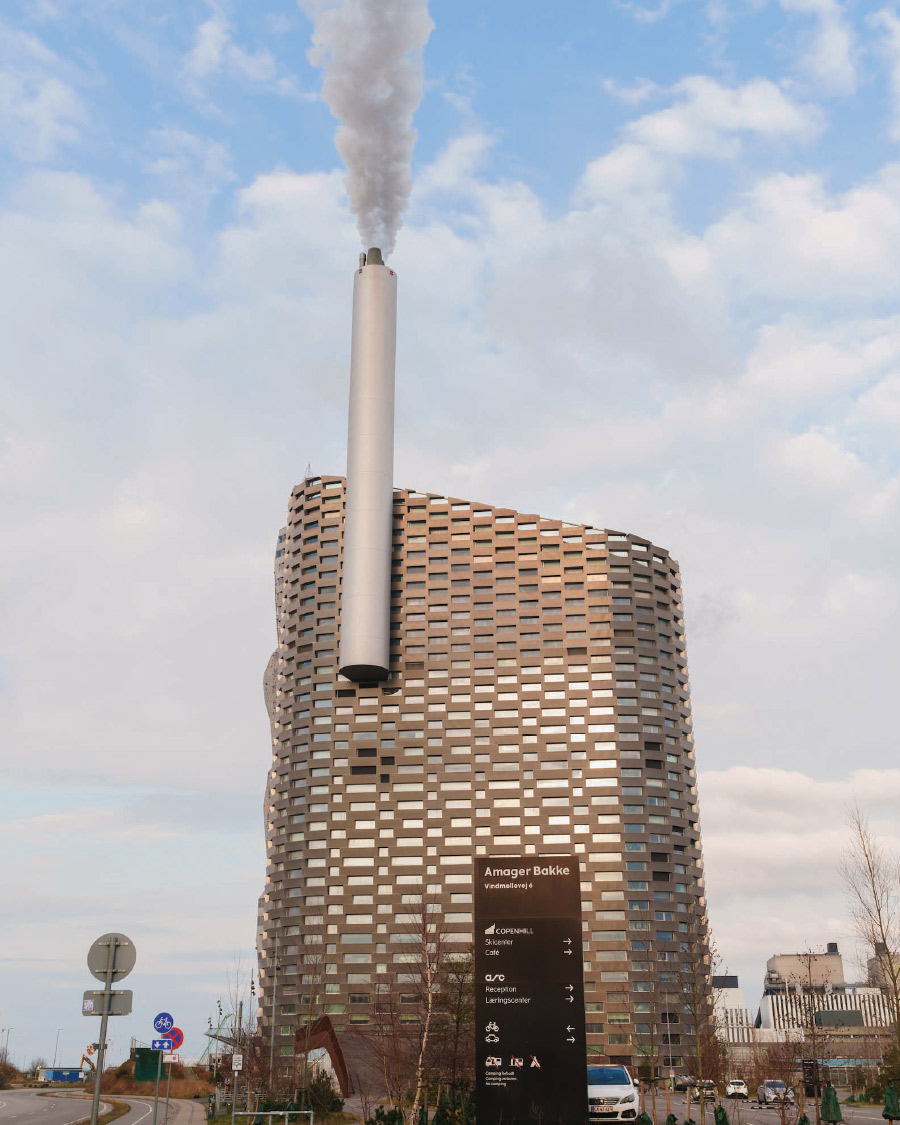
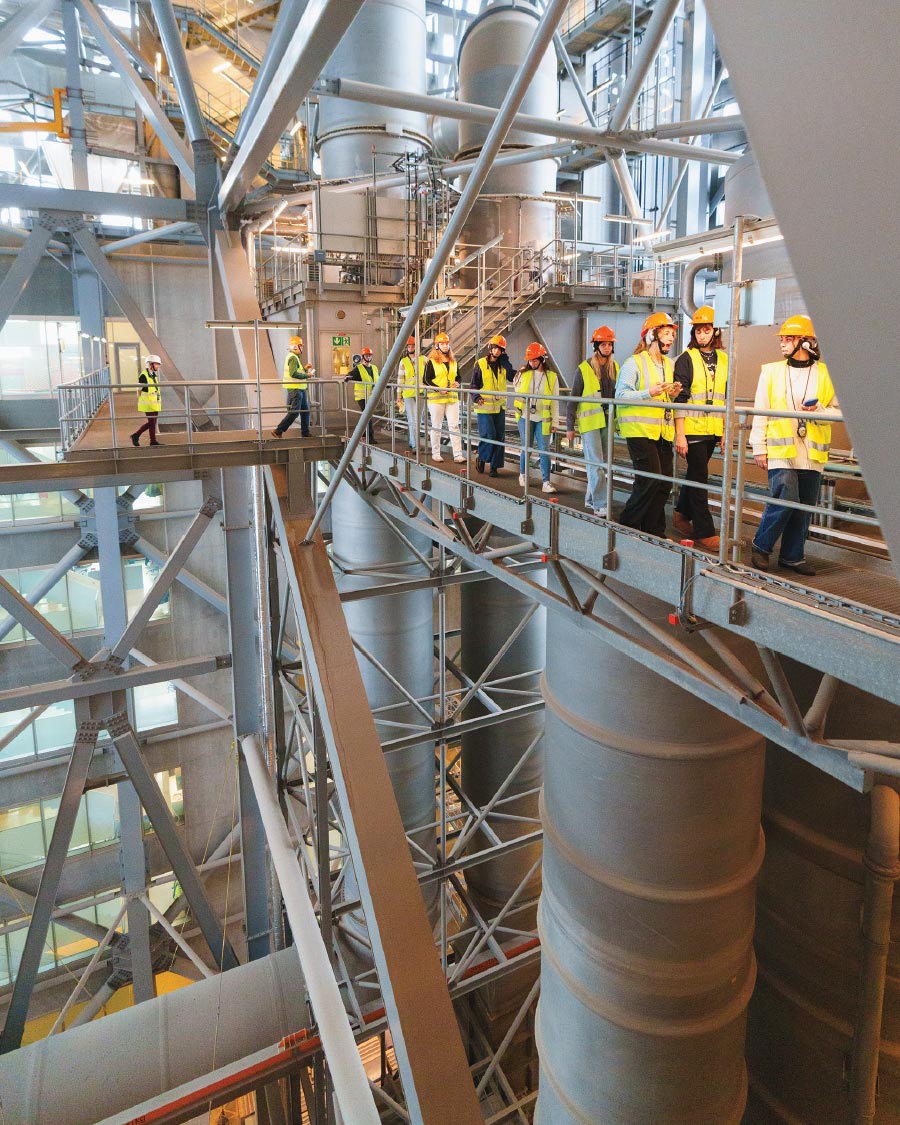
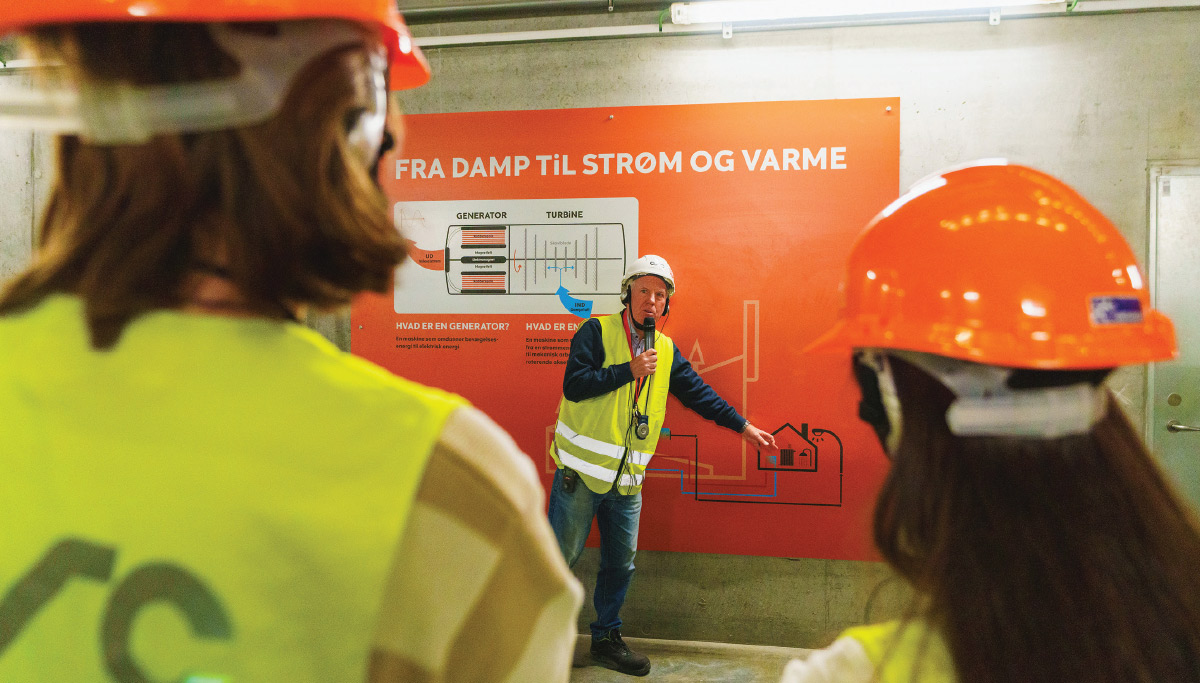
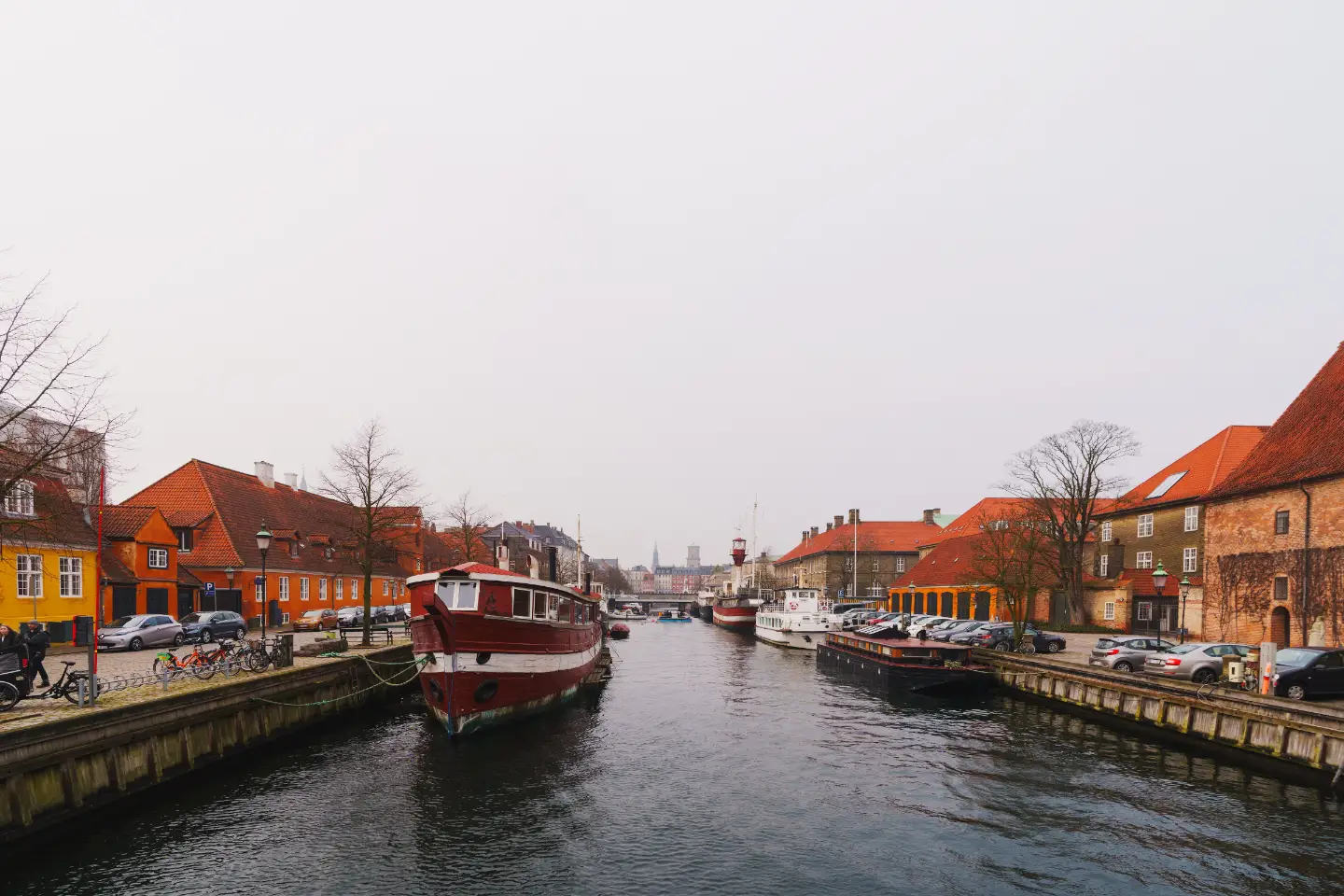
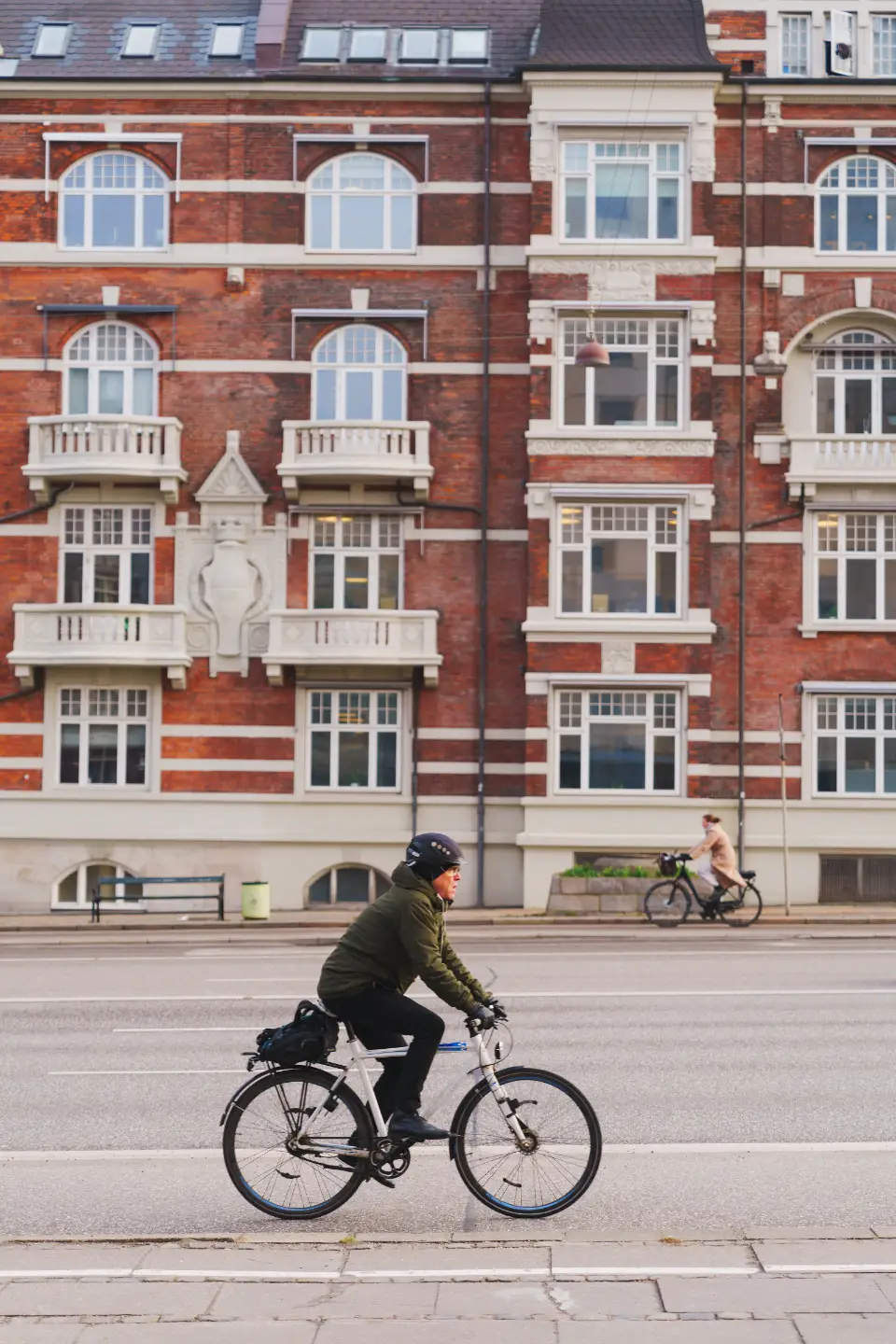







Their next stop, the island of Bornholm in the middle of the Baltic Sea, presented another chance to learn about the Danish commitment to sustainability. After an overnight ferry, the group got an up-close look at one of the most sustainable places on Earth. A national test zone for smart, renewable energy, the Bright Green Island gets 100% of its electricity and 80% of its heat from sun, wind and biomass energy generation. Plans call for it to be carbon neutral by next year.
“It’s such a special place,” says Ross, a bit in awe of its goal of zero waste. “But that’s something you can pull off a little more easily if you are a self-contained island with a relatively small population, except in the summertime when it explodes by eight or nine times.”
In addition to serendipitous interactions with locals about their sustainable way of life, the students also got to visit Hammershus castle on the northern tip of the island. Dating to the 12th century, it’s the largest castle ruin in Northern Europe.
Travel Rewards
“My favorite part was getting to know new people in such a fun way,” says Vyge, a psychology major from Beaufort, S.C. “Our class got along so well, so quickly, and it was such a positive group of people to travel with.”
It wasn’t all hygge and no work, however. Each student had to interview three Danes about a topic of their choice, such as their health care system, the biking culture or work-life balance, for one of three papers they had to write for the class. And, as with most travel experiences, it was a journey of self-discovery, too.
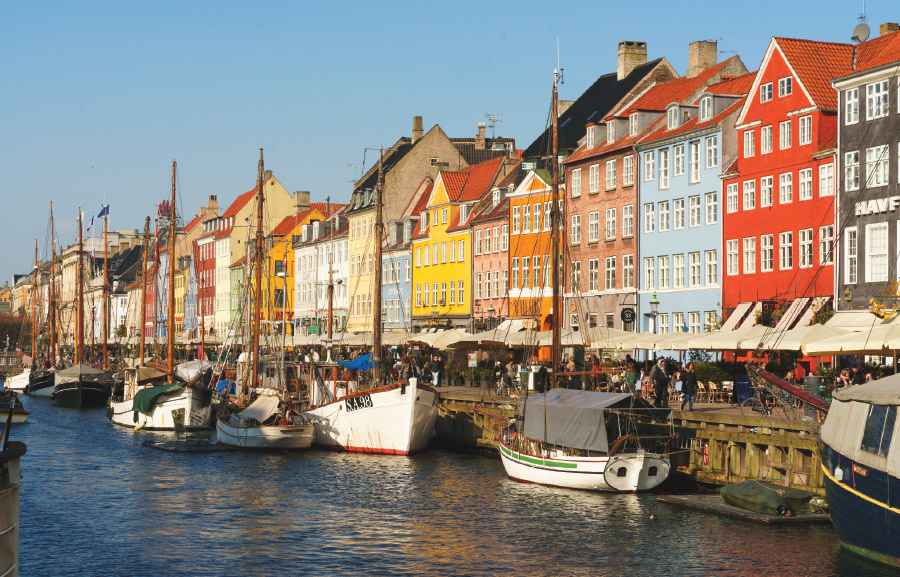

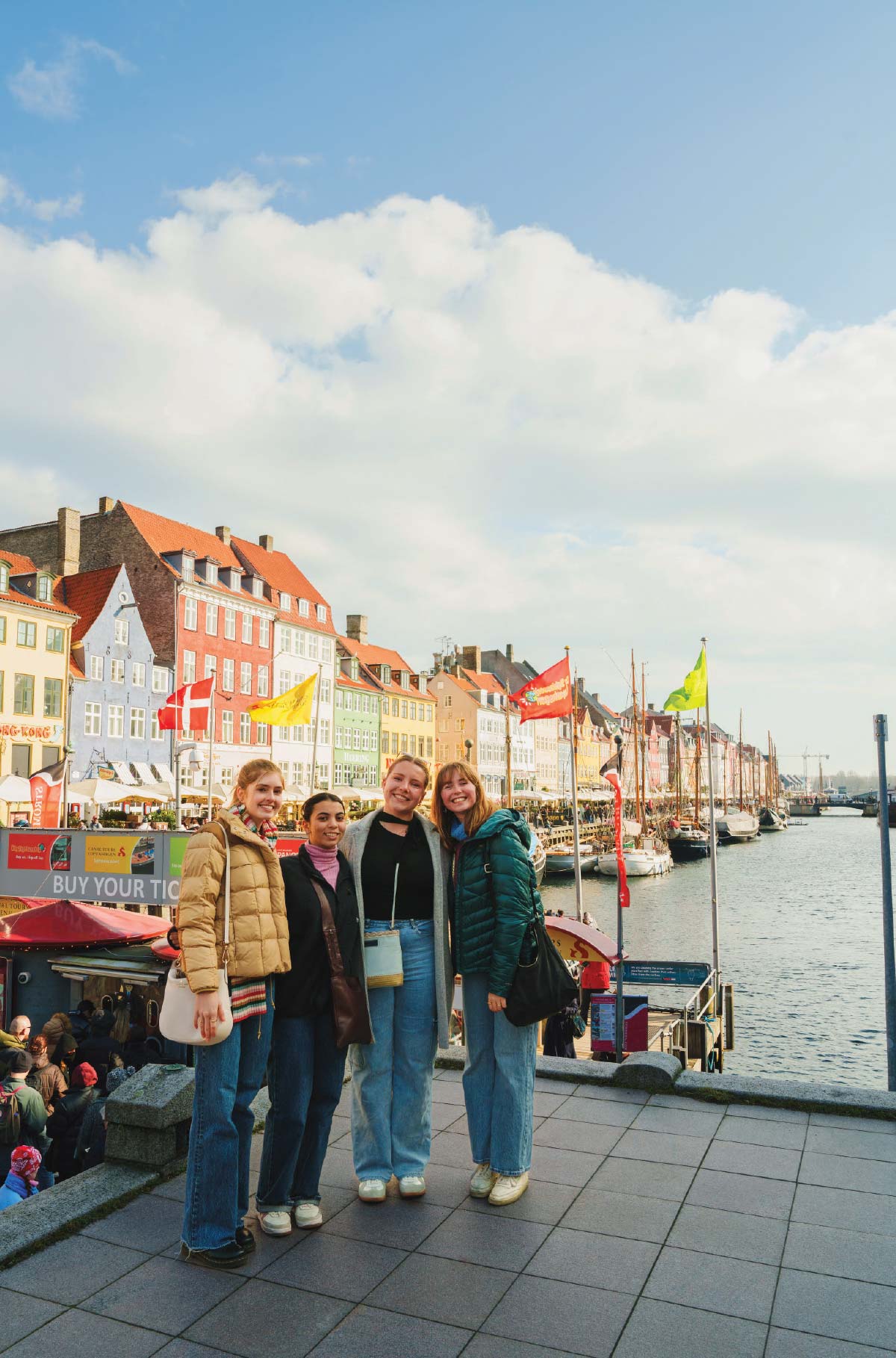
The contrast with how different Danish life is from American life really stood out to Vyge. “They seemed to center their life around the people and connections rather than work and money,” she notes. “You could definitely tell that there was a tight sense of community everywhere you went. Denmark is definitely not perfect in everything they do, but it was nice to be immersed in a different way of life that I can try to incorporate in mine.”
The trip went so well that Wright and Ross will offer it again next spring semester.
“These types of experiences are exactly the sorts of things that they need to begin to grow out of their comfort zone and begin to feel like the world is a bigger place and to try some things that are a little scary,” says Wright, the director of the FYE program. “There’s just so much benefit to doing trips like this, particularly to it being a first-year experience, because the students are more or less in the same cultural, social, emotional and academic space.
“One definite highlight is how well they traveled together,” she adds. “It can be challenging traveling with such a large group, especially students who are so young, many of them never having traveled like this before. But they were really good about sticking together. They took care of each other.”
The trip’s success was perhaps most evident to Wright and Ross upon returning to the classroom for the first time. The door to the classroom inside Maybank Hall was locked, so the students were all standing outside chatting and laughing like they hadn’t seen each other in months. New bonds were evident. Three of them grew close enough that they’ve decided to live together next fall.
“My favorite part of the trip was meeting and connecting with some of the people in my class,” says Blanton. “All of our experiences abroad really brought us close together, and I truly believe that it has given me some lifelong friends.”
And what could be happier than that?